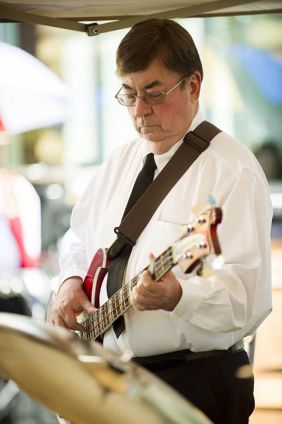To become a jazz musician, or any genre of musician, you must practice consistently over time, both with other musicians and alone. Progress will be incremental over time. You will not wake up one day and voila: you are a competent musician. You will get better little by little and you will reach plateaus of achievement.
It is very helpful to record yourself, especially when playing with other musicians or a band. Do this for both practices and actual gigs. The feedback is invaluable. You can learn what you are doing right and what needs improvement.
I record all the practices with my band. Over a year and a half, while listening to the recordings, I notice that I wince less than before! I hear fewer missed beats, fewer wrong chords, better rhythms. I can tell I am progressing and it is encouraging.
Yesterday, Sunday, August 19th, we had our usual Sunday practice. Our singer couldn't make it, so we used the opportunity to polish our instrumentals. It's a different trip to play just instrumentals, because the lead instruments (guitar and piano, in our case) have to carry the lead by themselves.
Have a listen to the practice here: www.soundcloud.com/gwaltrip.
Boss Unveils First Katana Bass Head, New 1×12 Cabinet
-
[image: Boss Unveils First Katana Bass Head, New 1×12 Cabinet]
Boss has released a few bass combo amps in the Katana series, but now
they’ve unveiled the ...
4 hours ago









